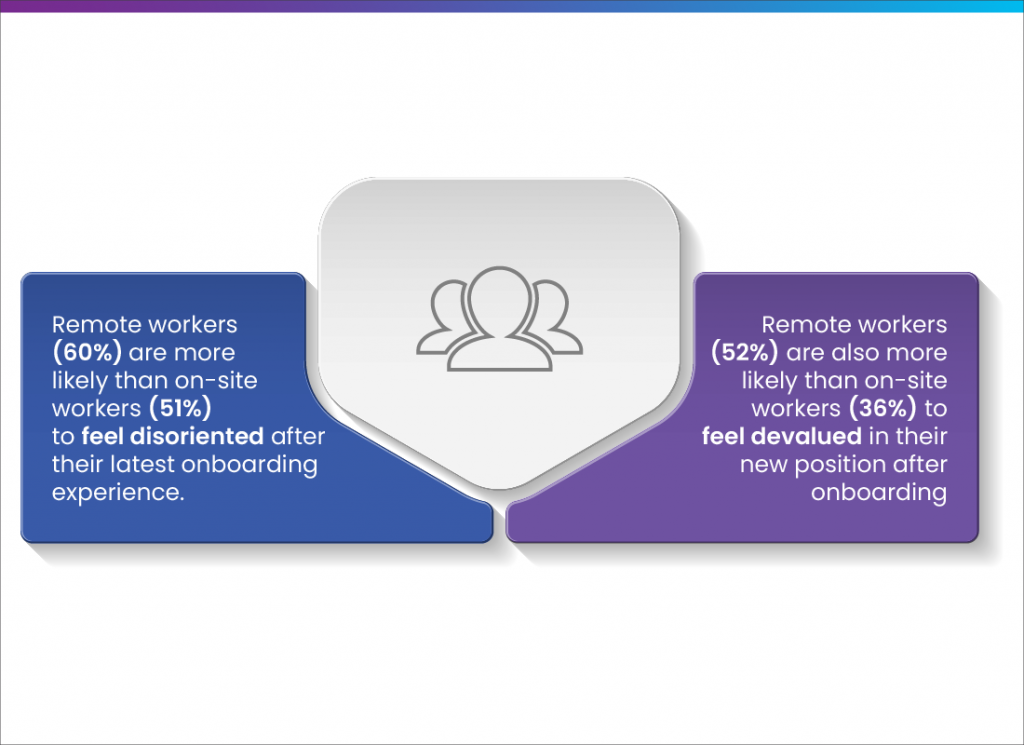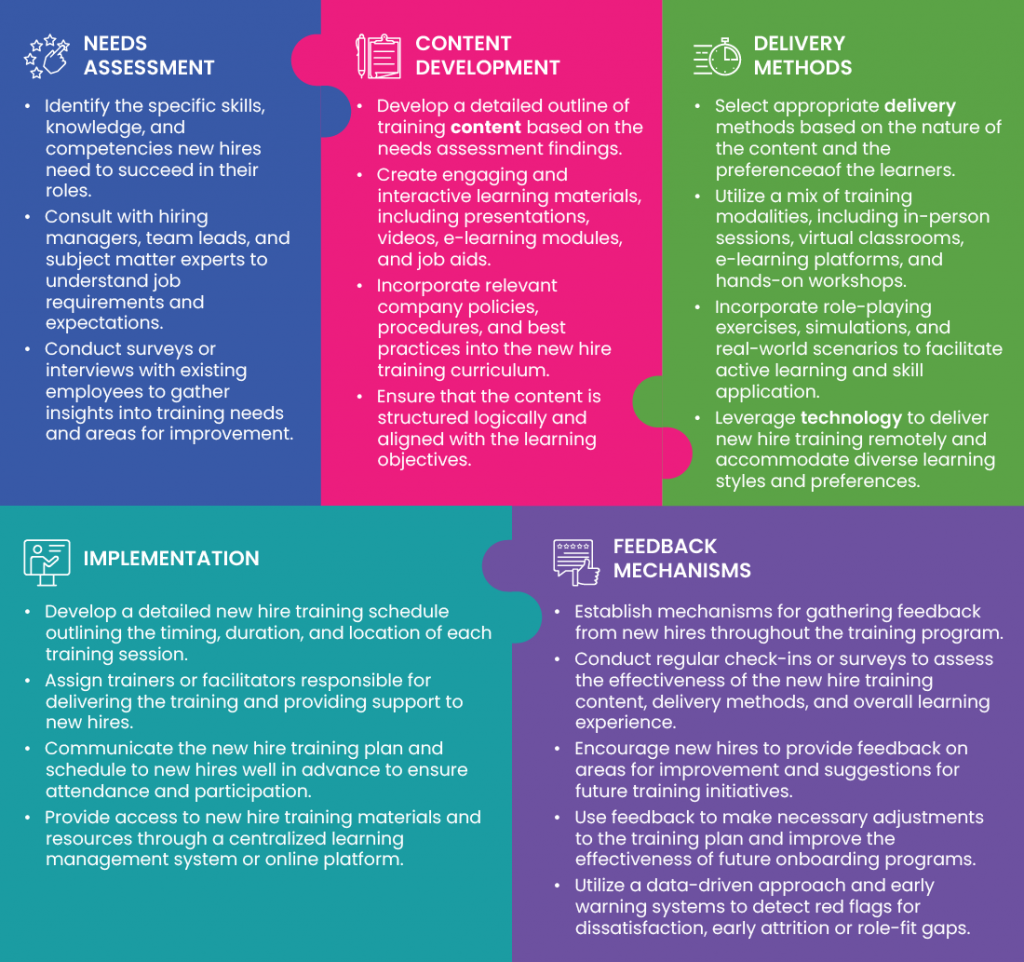
Best Practices for New Hire Orientation & Training
New hire orientation is a critical component of the employee lifecycle, serving as the first impression and foundation for a successful integration into the organization. Recent trends indicate that organizations are increasingly recognizing the importance of comprehensive onboarding programs, with studies showing that employees who experience a well-structured orientation are 69% more likely to remain with the company for at least three years.
Further, a robust new hire orientation process can significantly impact employee engagement and productivity, with research revealing that engaged employees are 87% less likely to leave their organizations. By providing new hires with the information, resources, and support they need to acclimate to their roles and the company culture, organizations can foster a sense of belonging and loyalty from the outset.
Investing in new hire orientation not only benefits individual employees but also yields significant returns for the organization. Effective onboarding programs have been shown to increase employee performance by up to 11%, leading to improved organizational outcomes and profitability. Additionally, organizations with strong onboarding processes experience 50% greater new hire productivity and 54% higher employee engagement. By prioritizing new hire orientation and incorporating best practices into the onboarding process, organizations can set the stage for long-term success, driving retention, engagement, and overall performance.

Onboarding Best Practices: Crafting a Memorable First Impression
Creating a positive and lasting first impression during onboarding is crucial for setting the stage for a new hire's success and long-term engagement with the organization. Here are some actionable tips and best practices for creating effective onboarding program:
Defining Clear Roles and Expectations: One of the cornerstones of a successful orientation program lies in clearly defining job roles, responsibilities, and performance standards for new hires. By providing a comprehensive overview of what is expected of them from day one, employees are empowered to navigate their roles with confidence and clarity. When individuals have a clear understanding of their job duties and performance criteria, they are better equipped to align their efforts with organizational goals and objectives. This clarity not only fosters a sense of purpose and direction but also enhances motivation and job satisfaction among new hires. Moreover, by setting clear expectations upfront, organizations can minimize misunderstandings and conflicts, thereby promoting a positive and productive work environment conducive to individual and organizational success.
Integrating into the Company Culture: Introducing new hires to the intricacies of the organization's culture, values, and norms is paramount for fostering a strong sense of belonging and cohesion within the team. By immersing new employees in the company's cultural fabric from day one, organizations can instil a shared sense of purpose and identity among team members. Through initiatives such as cultural orientation sessions, mentorship programs, and team-building activities, new hires gain valuable insights into the company's core values, beliefs, and behavioral expectations. This early exposure not only accelerates the assimilation process but also cultivates a deeper understanding and appreciation for the organization's ethos. As new employees begin to align their values with those of the company, they are more likely to exhibit greater enthusiasm, loyalty, and commitment to driving the organization's success forward. Moreover, by nurturing a cohesive and inclusive work culture, organizations can create a supportive environment where individuals thrive, collaborate effectively, and collectively contribute to achieving shared goals.
Transforming New Hire Training Plan with Immersive Learning Experiences: This involves a strategic integration of various dynamic and engaging activities aimed at equipping new employees with the necessary skills and knowledge to excel in their roles. By incorporating workshops, simulations, role-playing exercises, and hands-on training sessions, tailored to the specific requirements of their roles, organizations can create a comprehensive and impactful onboarding experience. Workshops provide interactive platforms for collaborative learning, enabling participants to engage in discussions, share insights, and learn from their peers. Simulations offer realistic scenarios where new hires can apply theoretical concepts in practical settings, honing their problem-solving abilities and decision-making skills in a risk-free environment. Role-playing exercises allow employees to step into different roles and perspectives, gaining valuable insights into various aspects of their job functions and fostering empathy and adaptability.
Moreover, by embracing innovative learning practices such as immersive learning experiences through virtual reality (VR) or augmented reality (AR) technologies, organizations can significantly enhance the effectiveness and efficiency of new hire training. VR and AR technologies offer immersive and interactive environments where employees can engage in lifelike simulations, simulations, and hands-on activities that mimic real-world scenarios.
Improving Remote Onboarding Experiences: This requires a strategic approach that leverages virtual platforms, regular communication, and structured training to effectively bridge the gap for remote employees. By utilizing virtual platforms such as video conferencing software and online learning management systems, organizations can facilitate seamless onboarding processes that allow remote hires to access essential resources, complete necessary training modules, and engage with colleagues and mentors from anywhere in the world. Regular check-ins with managers and team members provide remote employees with valuable opportunities for feedback, clarification, and support, helping to alleviate feelings of isolation and uncertainty commonly associated with remote work arrangements. Additionally, structured training programs tailored to the specific needs and responsibilities of remote roles ensure that new hires receive the guidance and support they need to succeed in their positions, even when working from a distance.

Including Management and Leadership in Action: By incorporating senior leaders into onboarding activities, organizations demonstrate their commitment to transparency, accessibility, and employee engagement. This approach allows new hires to interact with senior leaders, ask questions, and gain insights into the company's vision, values, and strategic direction from those at the highest levels of the organization. Moreover, research highlights that 33% of new hires specifically desire guidance from their manager or direct supervisor during the onboarding process, emphasizing the importance of managerial involvement in facilitating a smooth transition for new employees.
Developing a Comprehensive New Hire Training Plan
Creating an effective new hire training plan involves several key steps to ensure that new employees receive comprehensive and engaging onboarding experiences. At NIIT, we work through a series of steps to craft a robust and effective new hire training plan that equips employees with the skills, knowledge, and confidence they need to succeed in their roles while fostering engagement and retention:

Case Study: Ensuring Long-Term Success with NIIT’s Robust New Hire Orientation
Challenge: NIIT’s customer, the world’s largest healthcare data science and clinical research company, had a goal of onboarding over 400 associates for a critical job role across a year. The existing onboarding program was lengthy, exhaustive, and insufficient in producing professionals who were productive from day one post-training completion.
Solution: NIIT helped them design a 26-week-long onboarding program for the critical job role to enhance retention and learning effectiveness. The program trained learners in communication, presentation, problem-solving and other fundamental skills required to perform on-the-job tasks efficiently. The curriculum evaluated learners after every phase of training to track their progress and development areas.
Result: NIIT’s revamped onboarding program for Clinical Research Associates helped our client reduce time to competence by 24%, reduce program cost by 25%, improve time to billability by 42% and increase CRA cohort capacity by 33%. The program also helped the company meet the high demand for talent development during the COVID-19 vaccine trials.

Ensuring Long-Term Success with Robust New Hire Orientation
A well-executed new hire orientation program is not just a one-time event; it sets the foundation for long-term success and engagement within an organization. By investing time and resources into providing new employees with comprehensive and engaging onboarding experiences, companies can reap numerous long-term benefits. Learn more about improving learning experiences and delivering transformative results through NIIT’s managed training services.